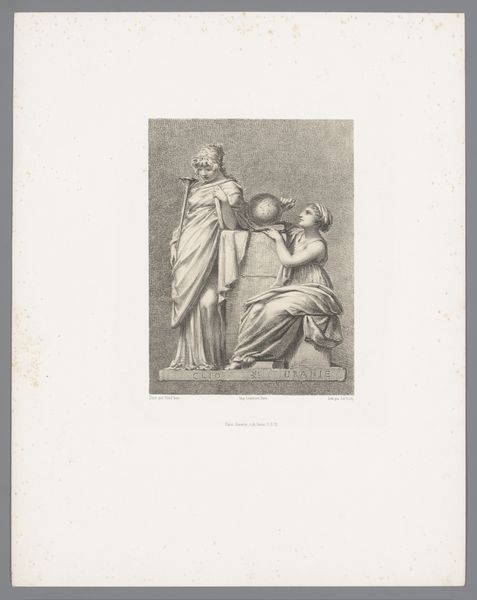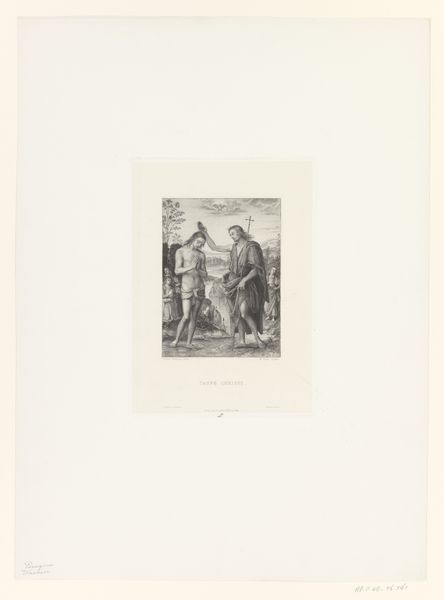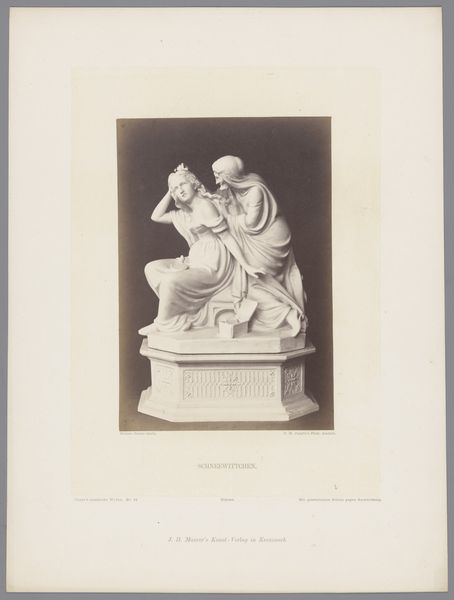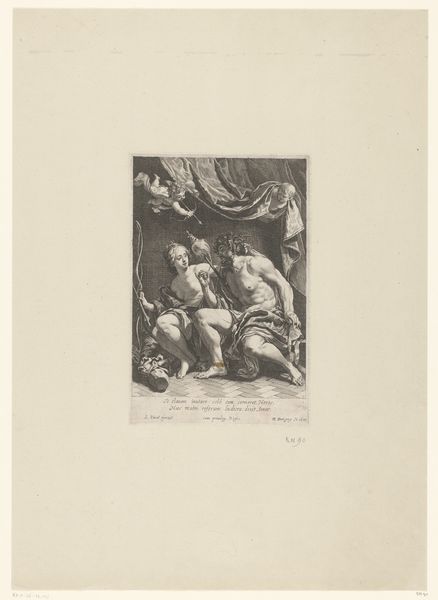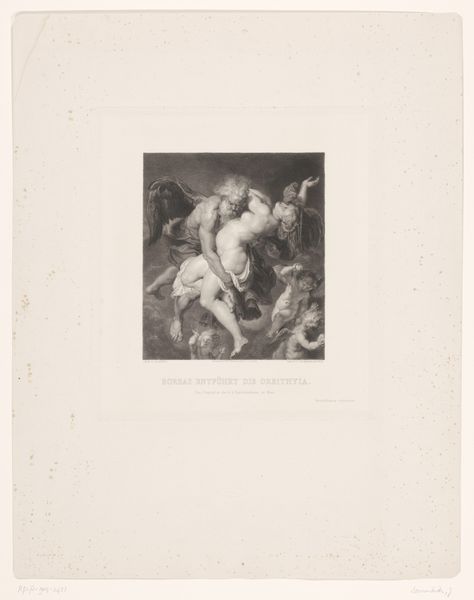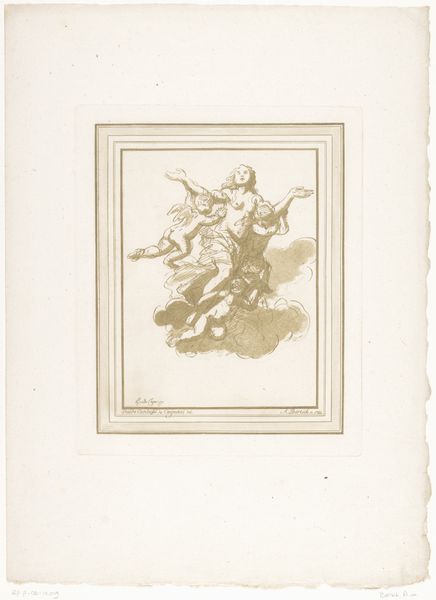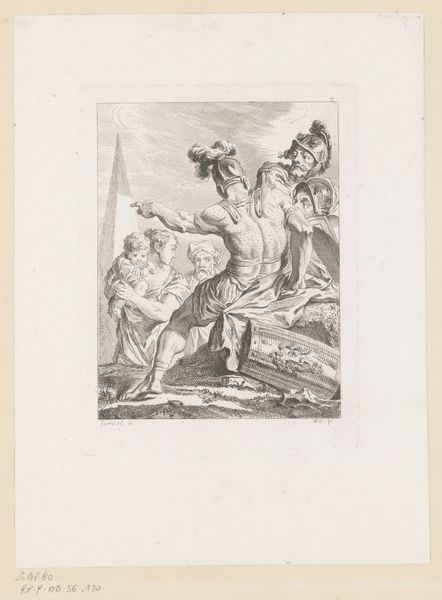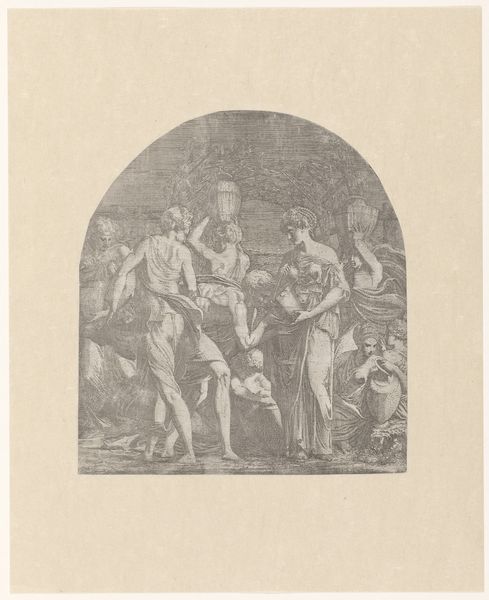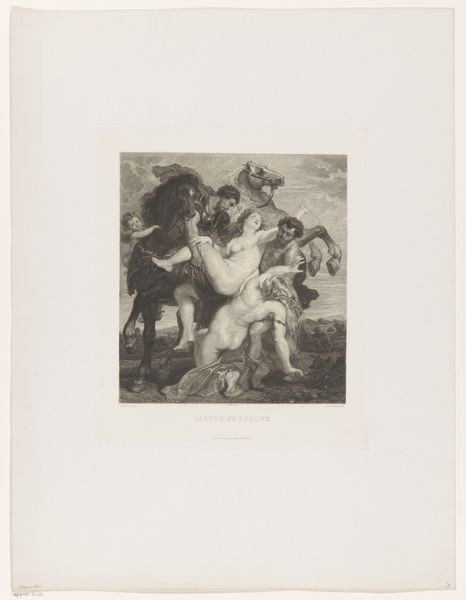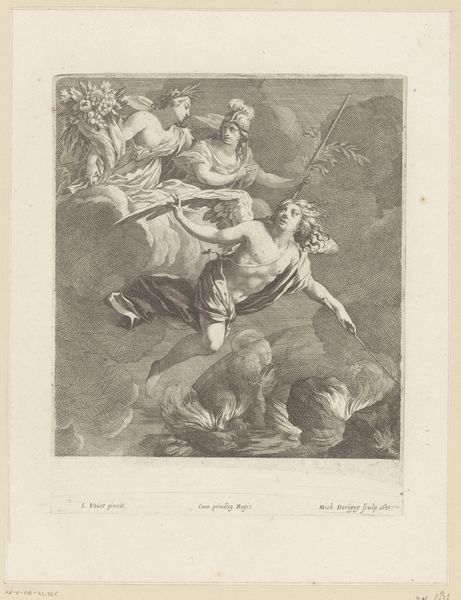
print, paper, engraving
#
allegory
# print
#
classical-realism
#
figuration
#
paper
#
history-painting
#
academic-art
#
engraving
Dimensions: height 389 mm, width 267 mm
Copyright: Rijks Museum: Open Domain
Editor: This is "Terpsichore en Erato," an 1851 print by Julien-Léopold Boilly. It’s done on paper, using engraving, and it strikes me as quite classical, almost like a scene from a Roman frieze. What do you see in this piece? Curator: Well, the choice of Terpsichore and Erato, muses of dance and lyric poetry respectively, is very telling for the period. Boilly positions them as allegorical figures, embodying not just artistic inspiration, but also a specific understanding of feminine virtue as it was constructed in 19th-century academic art. What’s more, note the implicit power dynamic at play; how might we view their near identical presentation with regard to then-current debates on equality and artistic genius? Editor: Equality, you mean between men and women in art? Curator: Precisely. These "muses" appear passive, vessels for inspiration, perpetuating traditional roles. How might a feminist lens unpack this? Consider, too, the history painting aspect: by invoking classical ideals, the piece participates in legitimizing certain power structures and narratives within the artistic establishment of its time. Boilly offers an accessible allegory, steeped in heteronormative artistic representations of the era, yet the power relations displayed remain to be investigated through our modern values. What’s your reading of that little cupid-like figure being ushered in the foreground? Editor: That's really fascinating, it pushes back against a simple aesthetic appreciation. I hadn't considered that the muses were kind of trapped by the artist’s approach. This really opens up a more critical way of looking at art! Curator: Indeed. By interrogating these representations, we challenge the art historical canon and make way for inclusive dialogue about gender, representation and the societal frameworks that inform both artistic production and its reception.
Comments
No comments
Be the first to comment and join the conversation on the ultimate creative platform.

